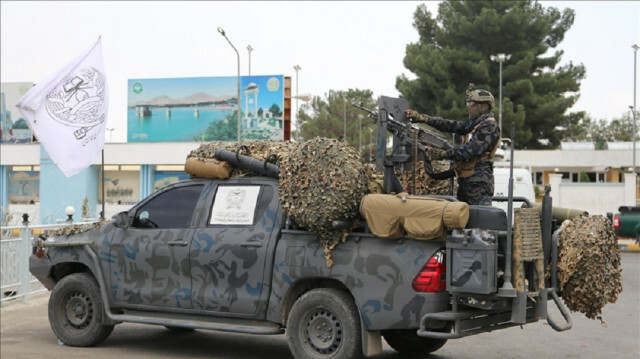Pakistan’s athletes continued to make their presence felt at the 6th Islamic Solidarity Games in Riyadh, as three competitors secured podium finishes.
Boxers Qudrat Ullah and Fatima Zahra, along with Kurash fighter Arusha…

Pakistan’s athletes continued to make their presence felt at the 6th Islamic Solidarity Games in Riyadh, as three competitors secured podium finishes.
Boxers Qudrat Ullah and Fatima Zahra, along with Kurash fighter Arusha…

We often assume that FDA relapses when they are exposed to drug-related stimuli. For what it could be, the FDA may also experience drug cravings even when there is no stimulus. Based on previous reports, we hypothesized that the brain areas implicated in drug craving are significantly activated at rest in FDA [16,17,18,19,20]. We used the resting-state functional MRI (rs-fMRI) technique as it allowed us to measure the brain activity of the FDA in a safe and non-invasive way. The novelty of this work is that focuses on individuals who have been abstinent from drug use, whereas most studies have mainly focused on active drug users. Additionally, while studies have been performed by exposing the participants to drug-related stimuli, the present work examined the brain activities of the FDA in the absence of such stimuli. This method would allow us to better understand the neural mechanisms underlying drug craving more straightforwardly. With this understanding, an evidence-based treatment plan or rehabilitation programme could potentially be developed to effectively inhibit drug craving at the neural level, thus minimizing the relapse rate.
When drug-abstinent individuals are exposed to drug-related stimuli, the brain areas responsible for craving, reward, motivation, memory, and cognitive control show significant activations [11]. The significant activations in these brain areas (commonly referred to as the reward pathway) have been found to induce drug cravings in drug-abstinent individuals, thus increasing their tendency to relapse [34]. However, less is known about whether similar activation would be observed in drug-abstinent individuals even when there are no drug-related stimuli. Therefore, the primary purpose of this study was to investigate whether the brain areas implicated in drug cravings show significant activation in drug-abstinent individuals without exposing them to drug-related stimuli. This study found seven significantly activated brain clusters when drug-abstinent individuals were at rest. These clusters comprised seven brain areas: the right PrG, left middle MOG, right SPL, right MCgG, bilateral AnG, left SFG, and left SMG. We interpret these findings in relation to those reported previously in the neuroscience literature.
The brain area with the highest peak of activation is the right PrG. The PrG is part of the primary motor cortex and is known for controlling the body’s voluntary motor movement [35]. Activation of the right PrG has been reported in many rs-fMRI studies [36,37,38,39]. In these studies, activation of the PrG during rs-fMRI was attributed to its role in the salience network—a brain network crucial for detecting and responding to internal and external stimuli. The salience network is constantly activated even when one is at rest. Similarly, we attribute activation of the right PrG to the processing and coordination of neural resources. Moreover, studies have not reported the role of the right PrG in drug addiction. The second-highest peak of activation was found for the left MOG, which is primarily responsible for visual processing. The specific role of the left MOG in drug addiction has been under-reported in the literature. Of those that did, most reported a decrease in activation of the left MOG rather than an increase. For instance, it was found that individuals with major depressive disorder and active cocaine addicts had decreased activations of the left MOG [40, 41]. As most studies mainly focused on active drug addicts, there is no available report on the activation of the left MOG in the FDA. As such, we attributed this increase in activation to visual processing, where our participants had to keep their eyes open during the rs-fMRI scans to avoid falling asleep [42,43,44].
Next, we found significant activation of the right SPL, which is responsible for many neuronal activities including visuomotor, cognitive, sensory, working memory, higher order, and attentional [45]. The significant activation of the right SPL in this study aligns with an earlier study demonstrating that drug-related stimuli evoked activation of SPL in heroin-abstinent individuals [11]. The authors mentioned that SPL played a role in motor preparation and output, suggesting that its activation may induce drug craving. Consequently, when viewing drug-related images, heroin-abstinent individuals tend to imagine the action of taking drugs, thus triggering the SPL. Although our study did not require participants to view drug-related images, the significant activation of SPL may suggest a residual neural activity related to motor imagery or planning, possibly linked to their history of drug use.
Apart from that, we also found a significant activation of the right MCgG. This region is part of the limbic system which is involved in reward processing, motivation, emotion, cognitive, motor function, and memory [46]. It has been proposed that the cingulate gyrus serves as a central “hub” in addiction-related neural networks of cognitive functions [47]. In addition to this, increased activation of the right MCgG has been suggested to modulate the reward circuit in individuals with cocaine use disorder [48]. In support of this, a study found that increased activation of this region was associated with increased cocaine craving in cocaine-dependent individuals [49]. Therefore, the significant activation of the right MCgG suggests that drug-abstinent individuals may still crave drugs even at rest. However, this assumption is arguable considering that the participants reported no feeling of craving. The role of the right MCgG in drug addiction remains elusive and warrants further investigations.
Subsequently, this study showed significant activation in bilateral AnG, left SFG, and left SMG. Previous rs-fMRI studies highlighted the role of these three regions as the primary center of DMN, which is mainly involved in mind wandering and internal thinking and is more highly activated during resting or passive conditions rather than during task-specific conditions [41, 50]. They are expected to be involved in internal mental states and become prominent when participants do not engage in external interaction. Significant activation of these regions may be attributed to their role in monitoring internal and external environments [51]. This explanation is plausible given that the participants did not engage in any task-specific condition during the rs-fMRI scans. Moreover, previous studies have not implicated these regions in drug addiction.
In summary, our findings did not support our hypothesis as we initially expected to see significant activation in the reward-related pathway including the insula cortex, basal ganglia, insula, amygdala, parahippocampal gyrus, and DLPFC [16,17,18,19,20]. We firmly believe that the reason behind this may likely be due to the demographics of our participants, which are very different from those of the previous studies. More precisely, our study involved participants who had been drug abstinent for approximately six years, while the participants in the earlier studies on which we based our hypothesis were either active users [16, 17] or had been drug abstinent for less than three months [20]. Therefore, the activation of the reward pathway documented in these studies may be due to their participants’ brains being still sensitive to drug craving. This is plausible provided evidence showing significant brain activations in FDA who had been drug abstinent for up to two years [34]. Our findings suggest that prolonged abstinence may reduce drug-specific brain responses. This is supported by previous reports linking prolonged abstinence with reduced brain reactivity and diminished activation of the reward pathway [51, 52]. The diminished activity in the reward pathway may be due to neuroplasticity—the ability of the brain to recover and restore its normal brain function in affected brain regions over time [53]. This neural adaptation was found in the brains of former marijuana and methamphetamine users following a long period of abstinence for at least 14 mon [54, 55]. Additionally, longitudinal neuroimaging studies provide strong evidence that prolonged abstinence from drug use leads to functional and neurochemical recovery in brain regions associated with reward and craving. For instance, a study found that heroin-dependent individuals with long-term abstinence showed significantly reduced activation in the medial prefrontal cortex, anterior cingulate cortex, and caudate in response to drug cues, compared to those with short-term abstinence [56]. This attenuation of cue-reactivity observed in the long-term abstinence participants was also associated with more stable subjective craving. Similarly, a systematic review examined 45 longitudinal neuroimaging studies involving treatment-seeking individuals with substance use disorders who underwent abstinence for at least two measurement time points [57]. The results consistently showed at least partial neurobiological recovery following abstinence. Structurally, significant regeneration occurred primarily within the frontal cortex, insula, hippocampus, and cerebellum, suggesting substantial restoration of gray matter integrity. Functionally and neurochemically, improvements were observed in prefrontal regions as well as subcortical areas such as the midbrain, striatum, and thalamus. Notably, structural recovery tended to emerge first, followed soon after by neurochemical normalization, and functional improvements, which required longer periods of abstinence. Overall, these findings underline the brain’s remarkable capacity for neuroplastic recovery during sustained abstinence and highlight the importance of timing in treatment interventions and relapse prevention. Based on these reports, the non-significant activation of the reward pathway reported in this study may indicate that the brains of the FDA rewire themselves and begin to normalize after a long period of abstinence. Together, these findings support the interpretation that neuroplastic changes during extended abstinence contribute to the normalization of brain function and reduced vulnerability to relapse. The findings also underscore the importance of long-term abstinence in inhibiting drug cravings and lowering relapse rates.
It is worth noting that this study has several limitations that should be considered when interpreting its results. Firstly, we only reported the brain areas that were significantly activated at rest and did not extend our investigation to connectivity analyses. The reason was that there are currently limited studies investigating the brain networks of the FDA, particularly in those using methamphetamine. Most studies have largely focused on heroin and cocaine users. In this study, we focused on methamphetamine as it is the most abused substance in the authors’ country [58]. As such, we focused on identifying and understanding the activated brain regions before extending our analyses to examine the functional connectivity of these regions. Additionally, as we only focused on methamphetamine, we cannot generalize our findings to other types of substance use (e.g. heroin or cocaine).
Secondly, most studies on this topic focus on active substance users. Of those that examined abstinent individuals, very few focused on methamphetamine. Therefore, the interpretation and discussion of our results are very limited and include findings that are not specific to methamphetamine alone (e.g., including results from cocaine and heroin studies). This limitation indicates that more research is warranted in exploring the brain functions of methamphetamine users, particularly in those who are no longer active users.
The third limitation is the demographics of our participants where we only included male participants, which limits the generalizability of the results to female FDA. Therefore, future studies should consider including both male and female FDA as their participants and compare the findings of both genders. A gender balanced study is recommended to reduce the potential confounding effects, ensure consistency, and enhance the validity of the results. Thus, a more comprehensive understanding of how the brain induces drug craving in male and female FDA could be achieved, allowing for the planning of a treatment that considers possible gender differences.
The fourth limitation is that the non-significant finding of the reward pathway activation may reflect the low sensitivity due to the small sample size. At the beginning of the study, we calculated that the optimal sample size for this study was 24 participants. However, after excluding those who did not meet the eligibility criteria, we were left with only 20 participants. Based on an earlier study suggesting that a sample size of 16 to 32 participants is adequate to achieve good sensitivity in an fMRI study [22], we believed that our number of participants was optimal, even after excluding the four participants. However, given that the results were not statistically significant at the stringent threshold, we should reconsider our understanding of this matter. Moreover, a much more recent fMRI study recommended a sample size ranging between 46 and 72 participants to yield results with high statistical power [59]. Therefore, future fMRI studies on addiction in particular should consider using a large sample size of 46 to 72 participants. Moreover, we did not include a healthy group for comparison as our primary objective was to investigate neural activation patterns within the FDA group. However, the absence of a control group limits the ability to determine whether the observed activations are specific to the FDA or reflect typical resting-state activity. Future studies should include matched healthy controls to clarify this distinction.
While the absence of reward pathway activation in the FDA group may be interpreted as a sign of neuroplastic recovery following long-term abstinence from methamphetamine use, it is important to consider alternative explanations for this finding. One possibility is that the observed null effect reflects limited statistical power, particularly given the relatively small sample size and the variability often observed in neural responses among individuals with a history of substance use. Additionally, task-related factors or residual effects of prior drug use could have influenced the observed activation patterns. Without a healthy control group, it is difficult to determine whether the absence of activation in reward-related regions is specific to the FDA group or reflects a normative resting-state pattern. Although a formal Bayesian analysis could have provided a quantitative estimate of the evidence for the null hypothesis (i.e., absence of activation), we chose not to conduct such an analysis due to the exploratory nature of the study, the single-group design, and the limited sample size. Under these conditions, Bayesian results could be sensitive to prior assumptions and potentially difficult to interpret without appropriate control comparisons. Nevertheless, we acknowledge the value of Bayesian approaches for evaluating null effects and recommend that future studies adopt this framework, particularly in combination with larger, well-powered samples and the inclusion of appropriate control groups. Such designs would allow for a more precise interpretation of the absence of activation in the reward pathway and contribute to a clearer understanding of the neural mechanisms underlying recovery in addiction.
Lastly, we acknowledge that examining functional connectivity represents a key strength of resting-state fMRI and could provide additional insights into the neural mechanisms underlying addiction and recovery. However, due to the scope and objectives of the current research that primarily focused on activation patterns within specific brain regions, functional connectivity analyses were not conducted. Future studies incorporating both activation and connectivity approaches would be valuable to more comprehensively characterize the alterations in brain networks associated with long-term abstinence from methamphetamine use. Despite these limitations, the findings of this study have advanced our understanding of the neural mechanisms underlying addiction in long-term abstinent individuals and contribute to the limited literature on methamphetamine addiction.

Talks between longtime rivals India and Pakistan on lingering water sharing disputes ended with no breakthrough on Thursday, local media reported.
At the end of the two-day talks, Islamabad warned to go for international arbitration if New Delhi…

Indonesia has awarded former authoritarian leader Suharto the title of national hero, in a move that has sparked accusations of historical revisionism in the world’s third-largest democracy.
The award has deepened fears about attempts to…

Apple has quietly rolled out a new feature in iOS 26.1 that finally solves one of the most frustrating Bluetooth issues. The update lets iPhone users stop nearby speakers—like car systems—from hijacking audio…

November 10, 2025 | Monday | News

An anti-Pakistan demonstration in Afghanistan’s capital was forcefully quelled by the Taliban on Tuesday.
Gunshots echoed in Kabul’s Wazir Akbar Khan neighborhood as the Taliban resorted to heavy aerial firing to disperse over 100 men and…

Australia’s iconic Bluesfest has announced the first round of artists set to perform at its 2026 edition, unveiling a cross-generational lineup led by Split Enz, Earth, Wind & Fire, and The Pogues.
Returning to Byron Bay’s Bluesfest…

The Perfect Neighbor topped the 10th annual Critics Choice Documentary Awards, which were handed out Sunday night in New York City.
The film scooped up five awards, including best documentary feature, best director for Geeta Gandbhir, best…

Jitendra Kumar is set to headline a new film alongside Pooja Bhatt that delves into India’s traditional pigeon-flying practice.
The project marks a reunion for Kumar and co-producer Hitesh Kewalya, who previously collaborated…